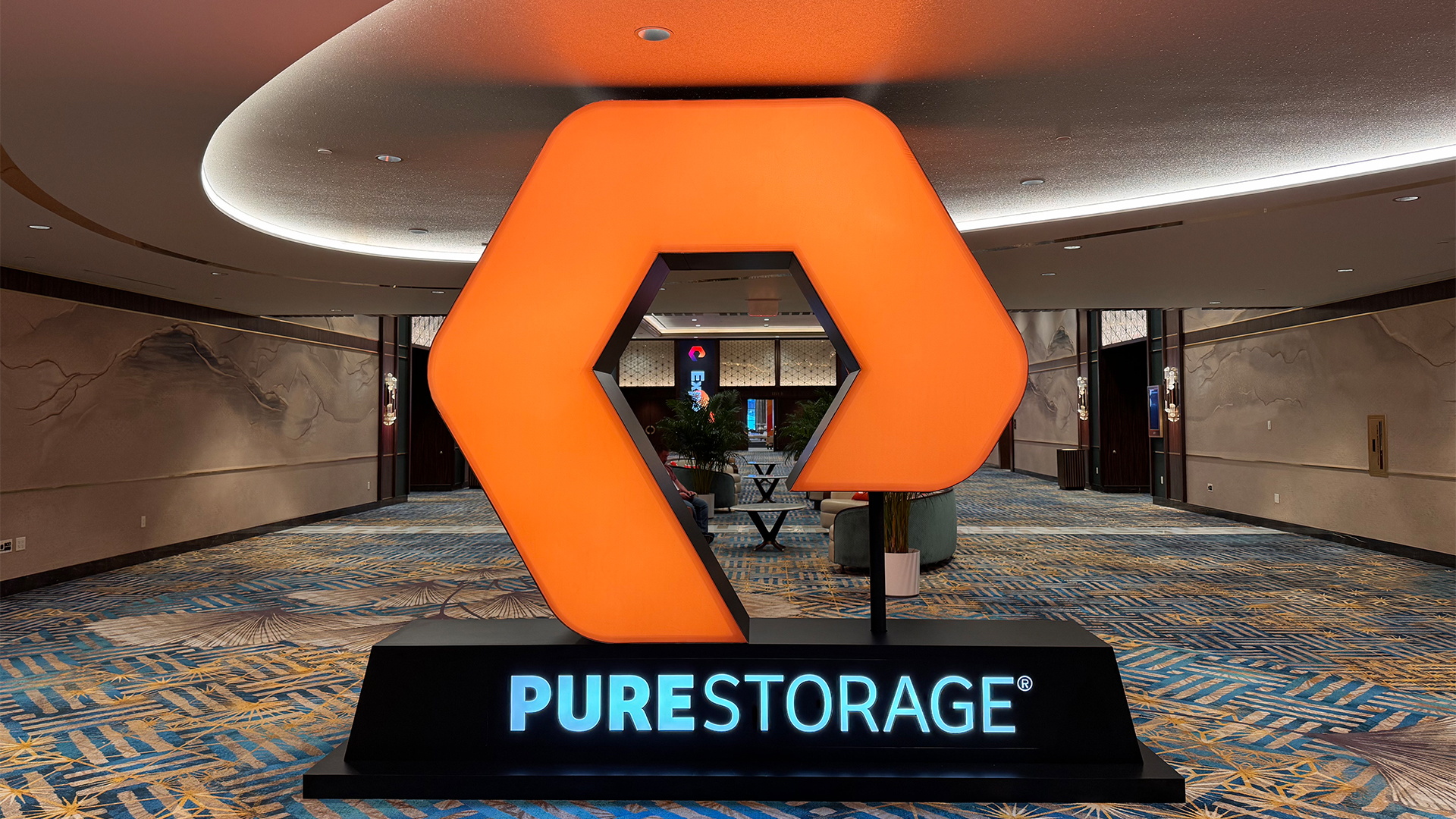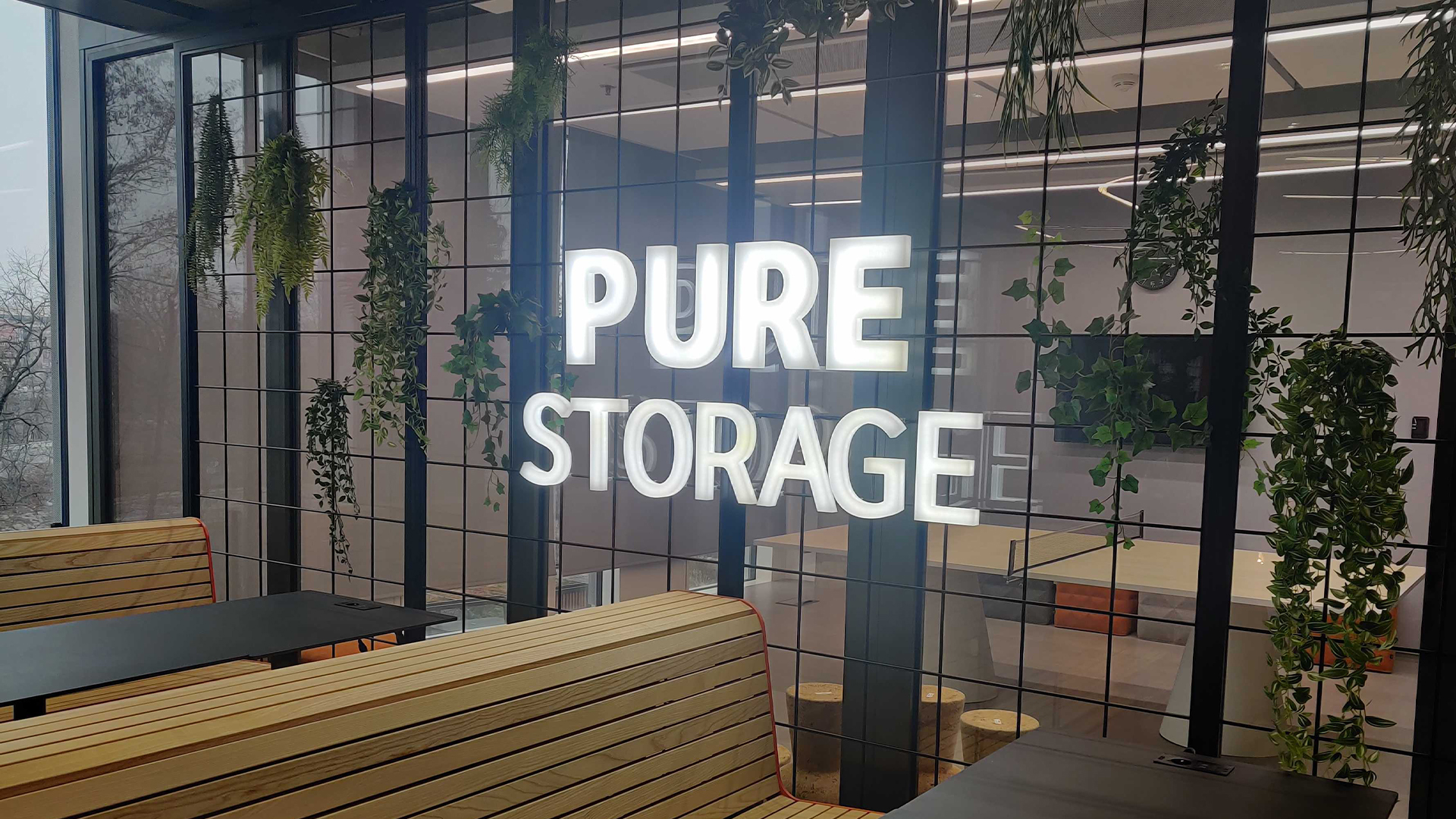'This was a very purposeful strategy': Pure Storage unveils Enterprise Data Cloud in bid to unify data storage, management
The company’s new Enterprise Data Cloud aims to streamline storage and data management


Pure Storage has announced the launch of a new unified data management platform aimed at streamlining infrastructure for enterprises - and CEO Charlie Giancarlo believes it’s a key differentiator for the company moving forward.
Unveiled at the company’s Pure//Accelerate conference in Las Vegas this week, the Enterprise Data Cloud (EDC) service aims to provide enterprises with a “virtualized cloud of data” that can be easily monitored, scaled, and managed.
The move marks the latest effort by the company to build out its platform-focused strategy for data storage and management.
With a unified architecture, it’s essentially cultivating an all-encompassing ecosystem which combines hardware and software, and caters to a wide range of enterprise storage options, including hybrid, public cloud, and on-prem.
If it all sounds rather familiar, then you’re not wrong. Other industry competitors, NetApp in particular, have similar options in the form of its Data Fabric - another unified data storage and management solution.
However, speaking to ITPro at the conference this week, Giancarlo said there are notable differences which make this an industry-first.
“I think they've used that [Data Fabric] for 25 years as their phrase,” he told ITPro. “But what’s really different is that we have this intelligent control plane, which has never existed in data storage before, just to be really clear.”
Sign up today and you will receive a free copy of our Future Focus 2025 report - the leading guidance on AI, cybersecurity and other IT challenges as per 700+ senior executives
The intelligent control plane, a key component of the EDC, enables enterprises to automate aspects of their storage and data management practices, such as the optimization of storage arrays, for example.
It’s by no means the only aspect of the new Data Cloud that has Giancarlo and the company waxing lyrical. Indeed, the new solution combines an array of automation and analytics tools, including Pure1, the company’s intelligent planning and analytics platform.
Similarly, integration of its AI Copilot, unveiled at last year’s conference also provides enterprises more detailed insights.
Meanwhile, Pure Fusion, another resource management platform, plays an equally important role in the broader strategy. This allows users to unify storage as a “pool of adaptable resources”, which ultimately simplifies management of arrays and configurations.
Reaching the point of offering a unified data storage ecosystem has been a long-term effort by the firm, Giancarlo told ITPro, and has been facilitated by Purity, the operating system which underpins the company’s FlashArray and FlashBlade systems.
This is essentially the software layer that allows users to manage and optimize storage options.
“This was a very purposeful strategy that took us quite a few years to develop, where we have developed everything on purity,” Giancarlo told ITPro.
“At the core of purity is something called a key value store, which is a very modern way of having very scalable metadata,” he added. “So whether it's a block, file, or object, a large file, small file, everything is just a key value that is done as a lookup.
“Having a unified data plane made it easier for us, and the fact that we're on all-flash made it easier for us to be able to finally deliver, for the first time, a virtualized cloud of storage rather than individual arrays.”
It’s this aspect of the Enterprise Data Cloud that differentiates Pure Storage from competitors in the marketplace, Giancarlo noted.
“Now the Data Fabric did not allow NetApp to actually create a global cloud of storage,” he said. “It allowed them to expand their file system somewhat, but not beyond a few arrays.”
Responding to customer needs
Speaking to assembled media at the conference, Shawn Hansen, VP & GM at Pure Storage’s Core Platform Business Unit, described the launch as a “huge moment” for the company.
Hansen added that the motivation behind the platform has come in response to growing demands for flexible, scalable storage solutions in the age of AI. EDC essentially allows users to consolidate and streamline the storage and management of data resources.
“We have the ability to unify all of your data appliances, all your data infrastructure, into one common pool,” he said. “And that gives you the ability to govern.”
According to Hansen, engagement with customers and industry partners highlighted a common recurring theme over the last year - an inability to generate value from data as a result of poor visibility and disparate environments.
“We've met with many CIOs from different banks and large companies around the world…the number one thing they tell us is they feel like they're out of control, that AI is happening so fast they can no longer control the data cycles, and their new problem is they have to aggregate, they have to centralize it, they have to control it and govern it, and then make that data ready and easy to use in their new AI systems.”
Simply put, Hansen insisted that tackling this confluence of challenges for IT leaders is “impossible” without a unified infrastructure approach.
“The world really needs to have something to unify and simplify,” he added.

Ross Kelly is ITPro's News & Analysis Editor, responsible for leading the brand's news output and in-depth reporting on the latest stories from across the business technology landscape. Ross was previously a Staff Writer, during which time he developed a keen interest in cyber security, business leadership, and emerging technologies.
He graduated from Edinburgh Napier University in 2016 with a BA (Hons) in Journalism, and joined ITPro in 2022 after four years working in technology conference research.
For news pitches, you can contact Ross at ross.kelly@futurenet.com, or on Twitter and LinkedIn.
-
 Tapping into the ’touch grass’ movement in cybersecurity
Tapping into the ’touch grass’ movement in cybersecurityIndustry Insights With cybersecurity experiencing a ’touch grass’ moment, what role should resellers play?
-
 Cyber resilience in the UK: learning to take the punches
Cyber resilience in the UK: learning to take the punchesColumn UK law now puts resilience at the centre of cybersecurity strategies – but is legislation simply catching up with enterprise understanding that resilience is more than just an IT issue?
-
 What now for enterprise virtualization?
What now for enterprise virtualization?With a trusted partner like Pure Storage, businesses can make the most of their virtualization journey
-
 Pure Accelerate 2025: All the news and updates live from Las Vegas
Pure Accelerate 2025: All the news and updates live from Las VegasKeep tabs on all the announcements at Pure Accelerate 2025 in our rolling live coverage
-
 Pure Storage targets partner growth with revamped reseller program
Pure Storage targets partner growth with revamped reseller programNews Pure Storage has unveiled a raft of changes to its Reseller Program as part of a drive to improve partner profitability.
-
 Pure Storage's recent hyperscaler ‘design win’ could be the death knell for disk storage
Pure Storage's recent hyperscaler ‘design win’ could be the death knell for disk storageNews Disk storage’s ubiquity in the enterprise market could be coming to an end
-
 Pure Storage announces VM assessment service – and it could please beleaguered VMware customers
Pure Storage announces VM assessment service – and it could please beleaguered VMware customersNews The firm unveiled a new tool for managing VM costs as part of its Pure//Accelerate London 2024 event
-
 Pure Accelerate 2024 live: All the news and updates from the day-two keynote
Pure Accelerate 2024 live: All the news and updates from the day-two keynoteLive Blog We're back with another live blog for day-two at Pure Accelerate 2024 in Las Vegas – keep tabs on all the news and announcements here
-
 Pure Storage tweaks SLAs amid sharpened focus on cyber resilience
Pure Storage tweaks SLAs amid sharpened focus on cyber resilienceNews Pure Storage announced updates to its service level agreements (SLA) to better serve the cyber security and storage requirements of its customers
-
 Pure Storage looks to 'fundamentally change' cloud storage management with new AI copilot tool
Pure Storage looks to 'fundamentally change' cloud storage management with new AI copilot toolNews Pure Storage has unveiled a raft of new AI features, including its very own copilot for storage management